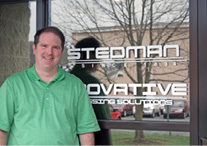By Chris Nawalaniec
Crushing equipment is the heart of an industrial material-processing system. The size reduction choice you make will have a profound impact on the profitability of your business. When the right choice is made, you should expect many years of profitable operation.
How do you make the right crusher choice?
Crushers are not glamourous. They are brute force workhorses and what they do is simple, really. Size-reduction equipment in all forms is adding energy to a material to make big pieces smaller. Simple, right?
Cost Versus Value
What does it cost or what is it worth? Producers need to keep that simple equation in mind. We all have to keep our eye on the ball and stay focused on profitability.
What are Crushing Costs?
- Capital acquisition cost.
– Base machine.
– Structures and chutes.
– Motors, drives, guards.
- Energy consumption per unit produced.
– Electricity.
– Compressed air.
- Wear parts cost – normal maintenance or planned downtime.
- Lubrication costs.
– Oil.
– Grease.
- Major repairs – infrequent maintenance or unplanned downtime.
- Labor time to perform normal maintenance.
- Special or unique tools required.
When the above costs are all accounted for, they are used to quantify the production costs related to size reduction and are expressed in cost per unit of measure production. For example, $0.50 per tph.
What Does Value Mean?
There are always opportunities to buy a machine at a lower upfront cost. This usually translates into paying higher operating costs over the life of the equipment. Higher service labor cost. Higher wear parts costs. Higher energy costs.
Often there is a justifiable case to spend additional capital dollars for the better machine. When evaluating crushing equipment suppliers, crusher manufacturers should quantify both costs: purchase price and operating costs. Before you purchase, ask for reference customers to visit.
Selecting Equipment
Why are there so many types of equipment? Our team brainstormed this question, and we came up with more than 50 tools or machines that are used for size reduction. What we are addressing here is industrial size reduction of dry, solid materials, which are grown, mined or chemically synthesized, and need to have a physical dimension alteration to be put to use.
Customers are asked five questions to begin the equipment selection process.
1. What is the material?
2. What is the moisture content?
3. What is the maximum size going into the machine?
4. What is the size range desired after crushing?
5. What is the desired production rate of finished product?
When it’s time to dive a bit deeper to define the problem, we ask some additional questions.
1. How long do you expect to operate the plant?
2. Are you looking at mobile, skid-mounted or fixed installation?
3. Are there electrical power limitations or special power requirements at the plant site?
4. Is the system open or closed circuit?
5. Do we need to consider future expansion plans now?
The variables above all affect your costs. Let’s take the first question as an example. How long do you plan to operate? There are times when mines reserves, stockpiles, permits, project contract terms affect expected life.
If a project is limited by any factor, then “good enough” could be the best choice. As long as the equipment is safe and there are machine wear parts and service available, then going “cheap” may be the best choice. Another factor to consider with low-cost is limited post-sale assistance if there is some process change or major equipment problem. You don’t want to be hung out to dry.
Aggregates producers typically expect to be running and profitable for many years. Always buy a crusher from an established company, develop a relationship, and expect ongoing service and personal contact. Ask before you buy about how they approach post-sale parts sales and service.
Ask the company quoting how they intend to offer service for their crusher. How many field service people do they have? Are they local, regional or too far away? Not having responsive suppliers will have a significant impact on your plant profitability.
Summary
Investing in the best size reduction equipment for your specific needs is a big decision. The above should give you a lot to think about so equipment solutions can be objectively analyzed.
Stedman Machine Co., 812-926-0038, www.stedman-machine.com, [email protected]
Chris Nawalaniec is vice president of sales and marketing at Stedman Machine Co.

